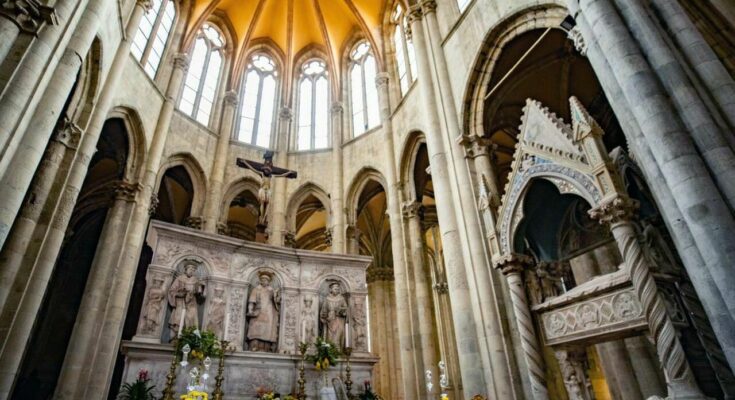Not only that Nero Theater and Fontanelle Cemeterywhich will be returned to the city between late ’25 and early ’26. There are many Neapolitan heritage sites in the works. From Santa Chiara to San Lorenzo Maggiore, from Church of Saint Mary of Constantinople to the throne Royal Palace: There are dozens of works at the cultural construction site of the Southern capital. However, there is no shortage of shadows: precious churches such as Sant’Agostino alla Zecca or Santa Maria in Cosmedin, for example, are in the process of being abandoned and work has stopped. Castel dell’Ovo remains closed for work starting in early 2023.
Il Mattino today looks at the situation regarding things that have been and must be done. The cultural building sites in the shadow of Vesuvius are vast and complex. So much is moving, as mentioned. But there is still a long way to go to fully exploit the great legacy that Napoli carries. Naples is not only alleys, folklore and Maradona murals, but also an irreplaceable piece of history, stratified in the urban fabric. Of course, 2026 will be a watershed year for the recovery of Neapolitan treasures: from the Plebiscite to the aforementioned Castel dell’Ovo.
RECOVERY
Let’s start on a positive note. As anticipated by Il Mattino in recent weeks, work has been completed on the Teatro di Nerone in the heart of Anticaglia (where the newly discovered Emperors’ Tribune will be visible). And the Fontanelle alla Sanità Cemetery is almost complete, its management will be entrusted to the La Paranza cooperative from December 8, the date set for the reopening of the site. We are talking about the two most important restorations, which will change the face of the historic center, with both reopenings expected to occur between the end of 2025 and the beginning of 2026. The restoration of San Lorenzo Maggiore, three steps from San Gregorio Armeno, confined by scaffolding for about a decade, will be fundamental. From the Municipal Planning Department of Palazzo San Giacomo they explain that the facade restoration operation is almost complete, and “the scaffolding will be removed at the end of 2025”, in a part of the city that is important for the Christmas holidays.
«At the beginning of next year – continuation of the City Planning office – work will begin in Scorziata, where the executive restoration and restoration project has been completed». The Holy Temple of Scorziata, founded in the 16th century, has been out of use for about thirty years. This restoration will represent the restoration of an abandoned building in the heart of UNESCO’s historic center. Staying on the topic of work in progress and nearing completion, mention should be made of the restoration of the Santa Chiara bell tower, which began in January for the amount of 635 thousand euros (funds from the Ministry of the Interior and the operation entrusted to the Trustees). Two other important parts of the city should be added to the list of restoration: we are talking about churches Santacroce and Purgatory in the Marketplace, restored by the City Government. And Maschio Angioino, whose visitor flow increased by more than one hundred thousand entries in the last year, thanks to the restoration work and exhibition of Mimmo Jodice. The Piazza Municipio area will be the protagonist in the coming months of another major Neapolitan restoration: we are talking about the archaeological park of the Greek, Roman or medieval walls that rise at the foot of the fortress. Metropolitana Spa is taking care of ten years of work. But most of it is complete, and the goal is to have the park usable by next summer. A real acropolis in the heart of Neapolis.
WHICH WAS LEFT
Let us turn to another list, namely the list of history set aside, concerned with the abandonment of monumental sites that, in most other cities in the world, would be jewels in the crown of the urban fabric. The precious churches of Sant’Agostino alla Zecca and Santa Maria in Cosmedin, both close to Rettifilo, are left abandoned, like dusty giants in the heart of the city. In Sant’Agostino alla Zecca, under the paths and skulls, the boat was repaired there. The same thing happened to Santa Maria in Cosmedin, which was suffocated for years by the safety net. Unfortunately, the churches are in good condition: Castel dell’Ovo has been closed since January 2023, due to necessary security and restoration efforts. This will be one of the halls of the America’s Cup, although as of today there is no official reopening date. Work has always stopped at the Principe Gallery too: scaffolding was erected from November 2024, but workers were never seen working by the tradespeople in this Neapolitan salon that is not only full of history, but also very central and very close to the National Archaeological Museum. We remind you that Galleria Principe is, technically, under the ownership of Invitalia. The precious complex of Saints Cosma and Damiano on Corso Secondigliano and the Schilizzi Mausoleum in Posillipo were also left to collapse and became containment barriers.
WORK
The excitement at the Neapolitan cultural building site is endless. Much other work is underway. About a month ago, a crucial recovery for the incurable began, which will last for several years, with regional funding exceeding one hundred million. We also continue with the Annunziata a Forcella complex, with San Domenico (which will house the Casa della Lettura) and with the reorganization of the Albergo dei Poveri. We then expect a date for the installation of the first of the 4 gates that will close the Umberto Gallery at night. We will start from Angiporto. We are also working intensively on the restoration of the church of Santa Maria in Costantinopoli, a stone’s throw from Piazza Bellini, the church of the Cocchieri on via dei Tribunali and the throne of the Palazzo Reale. Work on the restoration of the Spinacorona fountain is almost complete. Last, but certainly not least, work is underway under the colonnade of the Basilica of San Francesco di Paola in Piazza del Plebiscito, which will be completed by the end of next year. The contracting authority, in this case, is the State Property Office, which is also handling the restoration of the Palazzo Fondi (where the Agency’s new headquarters will be located) and the fundamental restoration of the Castel Capuano and the former Magistrates’ Court. The eastern gate of the ancient city, in the next five years, will finally change its appearance, and it is hoped that a partial relaunch after the end of UNESCO’s work will be achieved. Finally, it should be underlined that the Municipality, after the reopening of the Nero Theatre, is working on a network of often closed Neapolitan archaeological excavations such as Carminiello ai Mannesi, the Baths via Terracina or the finds at Salvator Rosa.



